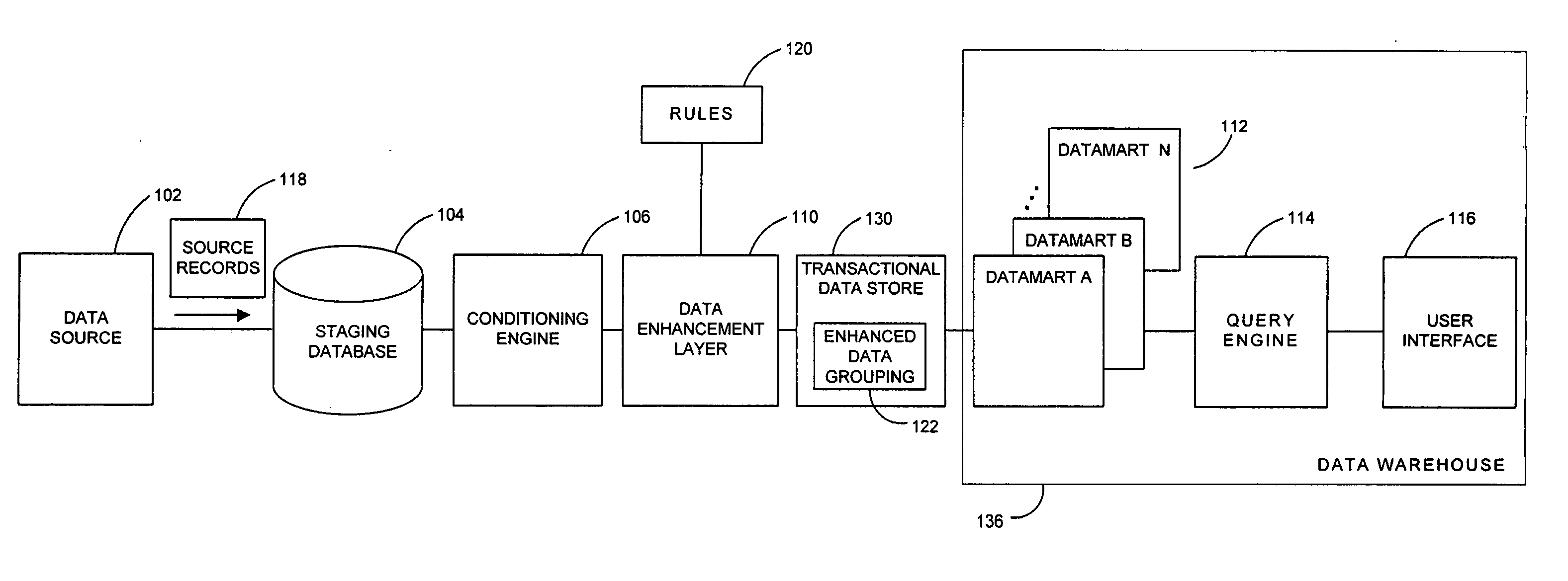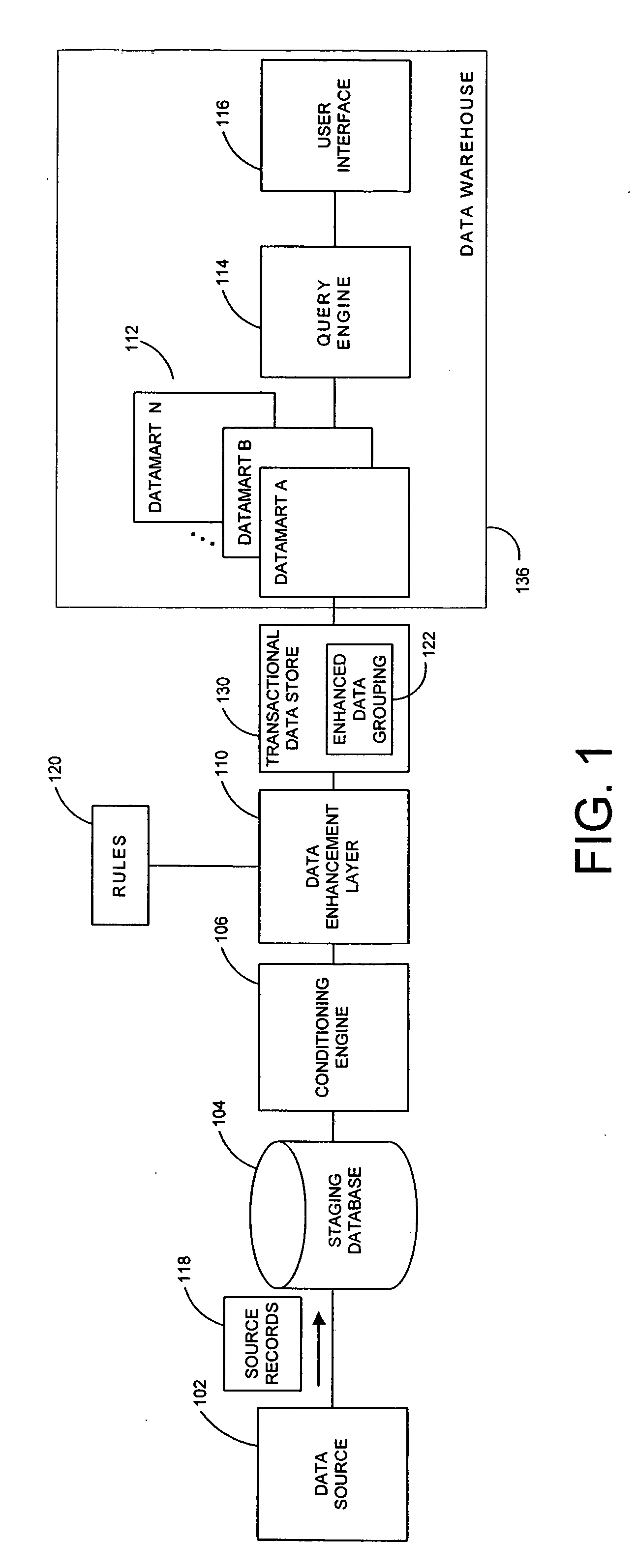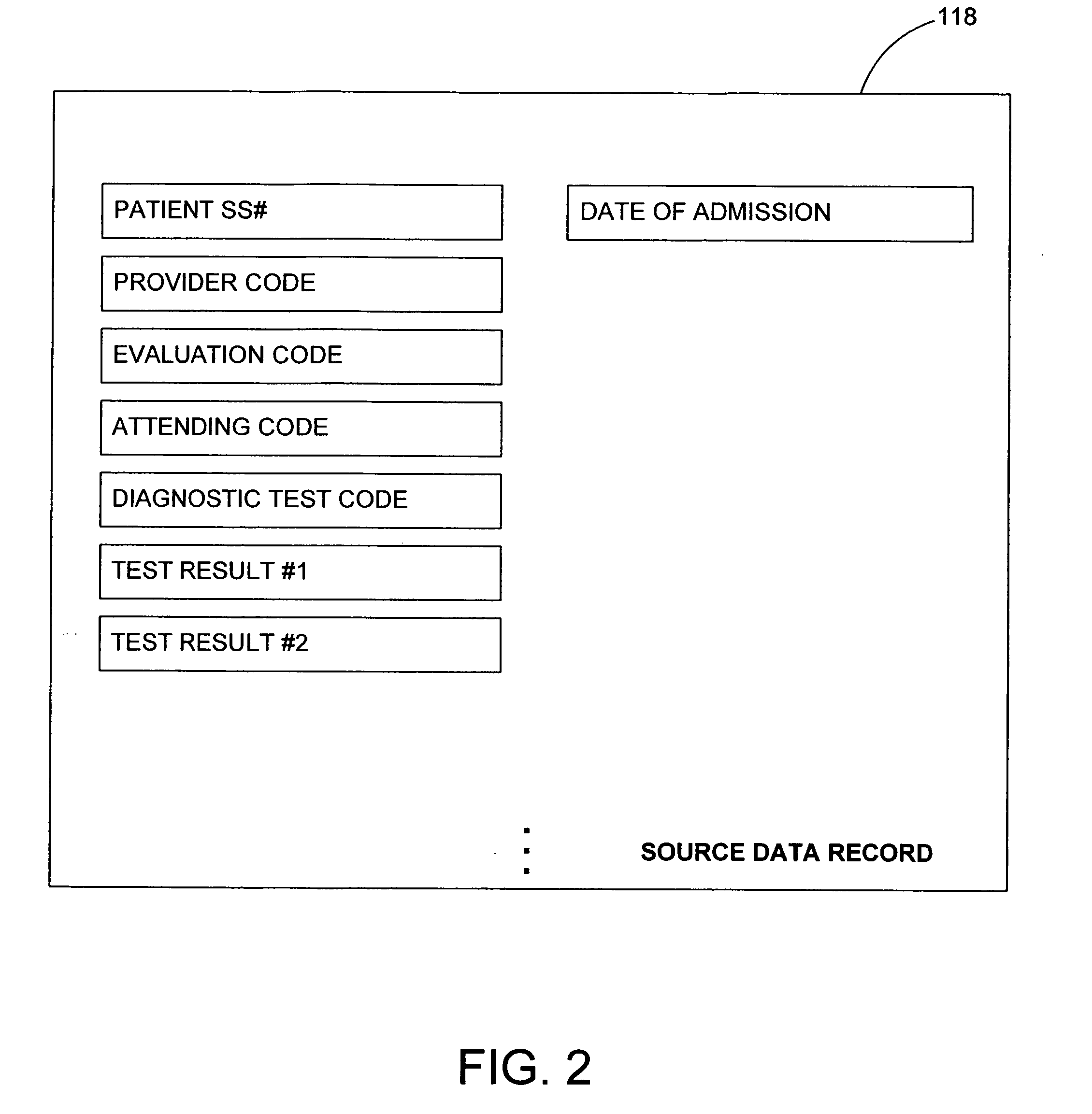System and method for multidimensional extension of database information using inferred groupings
a database information and multi-dimensional extension technology, applied in the field of information technology, can solve the problems of difficult to store physical or logically consistent aggregation of all such different data points, difficult to analyze or mine for the most clinically relevant or other data, and difficult to receive, condition and analyze large quantities of clinical information. achieve the effect of a greater range of possible groupings and queries, and more powerful and flexibl
- Summary
- Abstract
- Description
- Claims
- Application Information
AI Technical Summary
Benefits of technology
Problems solved by technology
Method used
Image
Examples
Embodiment Construction
[0017] An illustrative environment in which an embodiment of the invention may operate is shown in FIG. 1, in which a data sources 102 may communicate clinical medical or other data via a data enhancement layer 110 and other networked components to a transactional data store 130 and ultimately to a searchable set of datamarts 112 for analytic processing. The data sources 102 may be or include a medical or other site or facility, such as a hospital, laboratory, university, a military, government or other installation which may capture and store clinical and other data regarding patients, diagnoses, treatments and other aspects or outcomes of medical tests and other medical or other encounters or events.
[0018] The data sources 102 may transmit one or more source records 118 containing that clinical or other information via a network connection, such as the Internet, local area network (LAN), virtual private network (VPN) or otherwise to a staging database 104, for intermediate storag...
PUM
 Login to View More
Login to View More Abstract
Description
Claims
Application Information
 Login to View More
Login to View More - R&D
- Intellectual Property
- Life Sciences
- Materials
- Tech Scout
- Unparalleled Data Quality
- Higher Quality Content
- 60% Fewer Hallucinations
Browse by: Latest US Patents, China's latest patents, Technical Efficacy Thesaurus, Application Domain, Technology Topic, Popular Technical Reports.
© 2025 PatSnap. All rights reserved.Legal|Privacy policy|Modern Slavery Act Transparency Statement|Sitemap|About US| Contact US: help@patsnap.com



